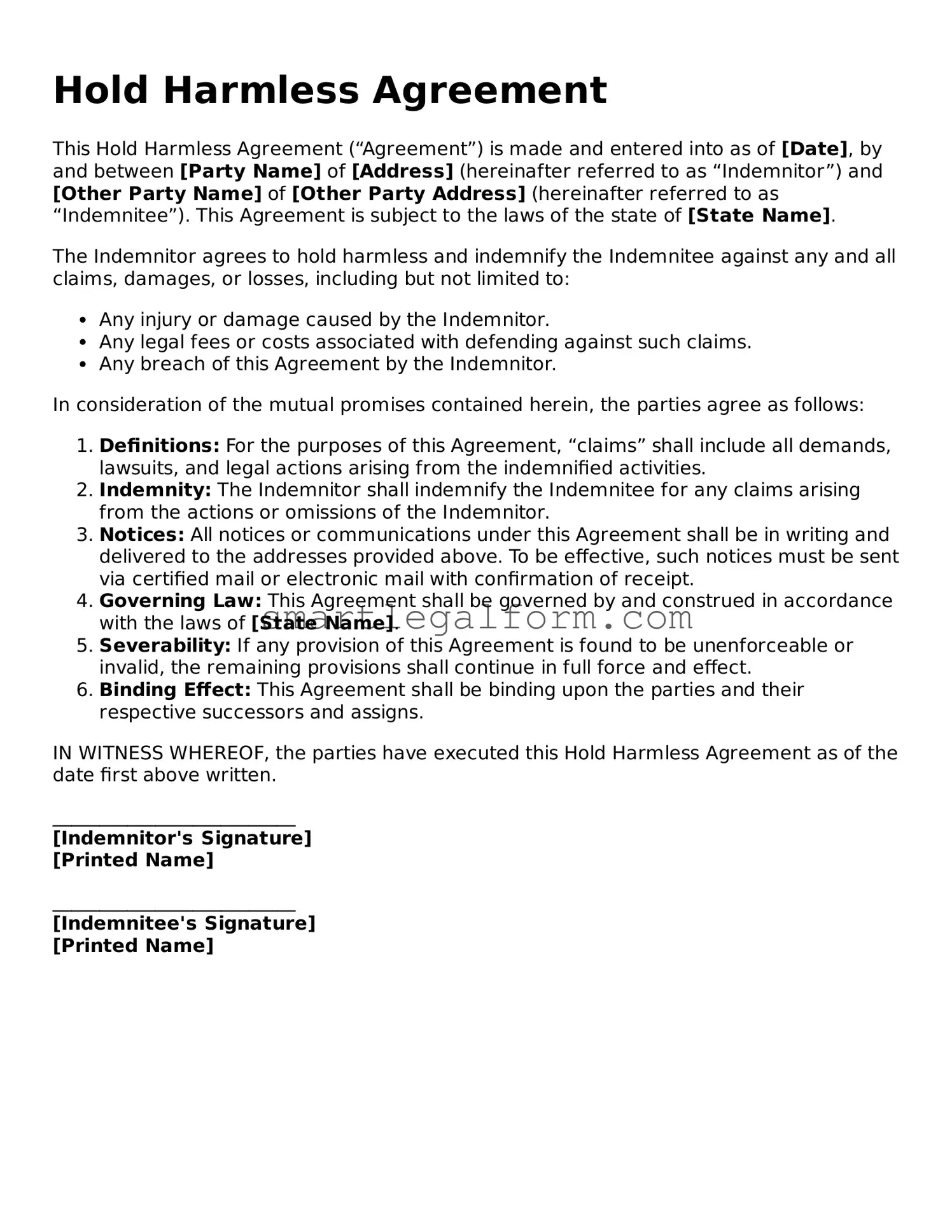When filling out a Hold Harmless Agreement, individuals often overlook critical details that can lead to complications down the line. One common mistake is failing to read the entire document thoroughly. Many people skim through the agreement, assuming they understand the terms. This can result in misunderstandings about their rights and responsibilities.
Another frequent error is not clearly identifying all parties involved. It’s essential to specify who is being held harmless and who is providing the indemnity. Leaving out a party can lead to disputes later, especially if an issue arises related to the activities covered by the agreement.
Inadequate descriptions of the activities or events can also create problems. If the scope of the agreement is vague, it may not protect the parties as intended. A clear and detailed description helps ensure that everyone understands the extent of the protection being provided.
Some individuals neglect to include a date on the agreement. Without a date, it can be difficult to determine when the agreement takes effect, which can lead to confusion if a claim arises. Always ensure that the date is prominently displayed.
Another mistake involves not having the agreement signed by all parties. An unsigned agreement may not hold up in court. It is crucial that everyone involved acknowledges and agrees to the terms by signing the document.
People sometimes forget to consult with legal professionals before finalizing the agreement. While it may seem straightforward, having a legal expert review the document can prevent potential pitfalls. They can offer insights that may not be immediately apparent to someone without legal training.
Additionally, failing to keep a copy of the signed agreement is a common oversight. Without a copy, individuals may find themselves in a difficult position if a dispute arises. It’s important to store the document in a safe place where it can be easily accessed.
Another mistake is assuming that a Hold Harmless Agreement is a one-size-fits-all solution. Each situation is unique, and the agreement should be tailored to fit the specific circumstances. Generic forms may not provide adequate protection.
Some people also overlook the importance of understanding the implications of the agreement. They may not fully grasp what it means to hold someone harmless or the potential liabilities they are accepting. Taking the time to understand these concepts is vital.
Lastly, individuals may neglect to update the agreement as circumstances change. If new parties are added or if the nature of the activities shifts, it’s essential to revise the agreement accordingly. Keeping the document current ensures continued protection.
